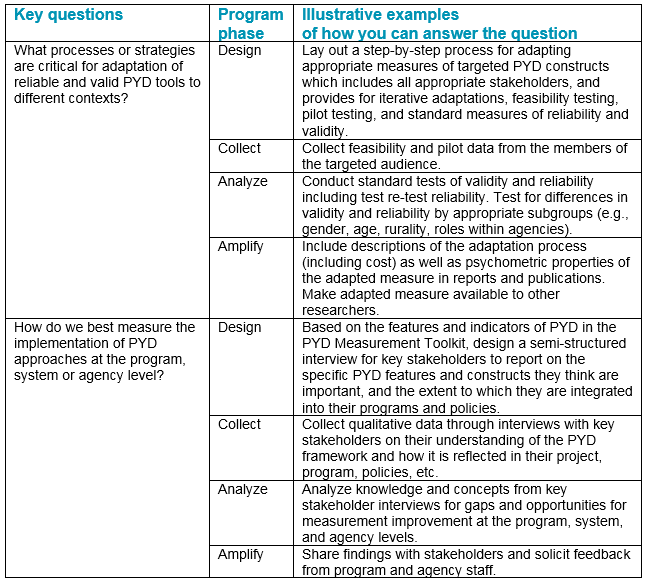Measurement of PYD Constructs
GAP: Most of the PYD programs identified in the systematic review did not use validated tools of PYD constructs as indicators of program impacts.
Using valid and reliable measurement tools of PYD constructs provides essential data on how PYD approaches work to impact outcomes in low- and middle-income countries (LMICs). Using tools found to be valid and reliable increases our ability to draw conclusions about what makes a PYD program work, and to make comparisons and generalizations about what does and does not work in various contexts and for different groups of young people. Without such measures, it is impossible to say whether a program which was designed to improve the PYD constructs effected changes in those constructs. Furthermore, it is impossible to know if the intended PYD targets influenced behaviors (when appropriate) or had the expected impacts on the intended youth outcomes. For example, a program designed to improve self-efficacy and agency in order to increase civic engagement should be able to demonstrate not only that program recipients had higher levels of civic engagement, but also that the program increased self-efficacy and agency (effected change on targeted PYD constructs) and that improved self-efficacy and agency led to the intended increase in civic engagement. Because of the pivotal role the PYD constructs play in building evidence for how and why PYD programs work, research informing measurement specifically was adopted as one of the five themes for the PYD Learning Agenda.
Measuring PYD constructs is essential for us to understand if and how PYD programs work in LMICs. The PYD Learning Agenda developed by YouthPower Learning focuses attention on filling gaps in the use of valid and reliable measures of PYD constructs in the evaluation of PYD programs. Two key questions have been posed and some progress has been made in answering both of them.
Key questions for future research and illustrative sub-questions
- How do we determine whether a measure found to be valid and reliable in one context is appropriate to be adapted to a different context?
- What are the costs and benefits of adapting an existing valid and reliable tool compared to creating a new tool more tailored to the context?
2. How do we best measure the implementation of PYD approaches at the program, system, or agency level?
- What (if any) measures currently exist to evaluate the extent to which a program is PYD vs. not PYD?
- How can we evaluate the impact of efforts to increase the capacity of a system or agency to implement PYD programs and policies?
Click the button below to access recent learnings on Measurement of PYD Constructs.
Potential Strategies to Address Measurement of PYD Constructs:








